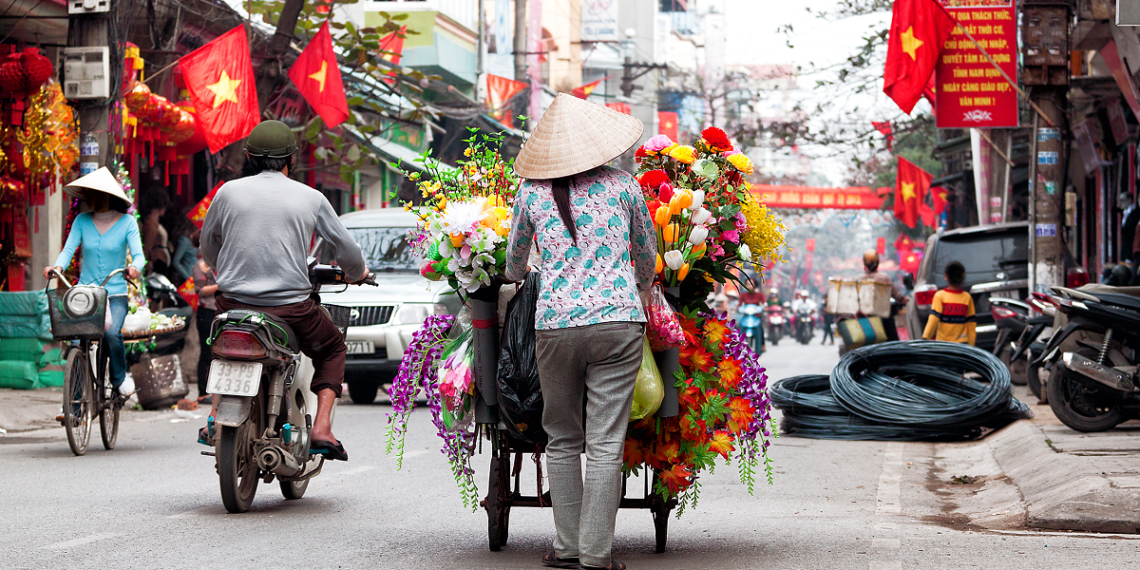Vietnam’s mined output of rare earths soared tenfold last year, according to US data, and the country now aims to raise its rare earths production to 2.02Mtpa by 2030, maximizing on interest from global firms drawn to their vast deposits.
According to a Vietnamese government plan seen by Reuters, higher output will be moved along by nine mines in the northern provinces of Lai Chau, Lao Cai, and Yen Bai.
The fervent ramp up comes from growing electric vehicles (EVs) sales and efforts to diversify suppliers away from China, bringing new interest into Vietnam and its 22Mt estimated rare earth reserves, the second largest behind China.
Rare earths elements (REEs) have been deemed critical by many countries and are used in manufacturing EVs, semiconductors, smartphones, and other important and necessary tools for the global transition towards cleaner energy and defence technology.
Vietnam’s estimated reserves are half of China’s, according to data from the United States Geological Survey (USGS), a government agency. Its output growth last year, turned it into the world’s sixth biggest producer (up from 10th in 2021).
According to the survey, Vietnam’s rare earth mine production leapt to 4,300t in 2022, up from 400t the year before. Its output is, for now, minimal compared to China, the world’s biggest producer, mining a whopping 210Kt in 2022, followed by the US at 43Kt, and Australia at 18Kt.
It was also the only major producer in the region to boost output last year, USGS data showed.
This has drawn interest from multiple companies and countries like South Korea and Australia, who in June, both made diplomatic moves on the Southeast Asian country.
According to Nikkei Asia, South Korea and Vietnam signed a memorandum of understanding (MOU) to establish a joint supply chain centre for rare earths and other critical minerals, aiming to secure a stable supply chain for South Korean companies, and encourage them to invest in Vietnam.
Australia committed US$105M to support Vietnam’s clean-energy transition and help it update its mining law, according to the South China Morning Post. This was done to attract foreign investment and develop Vietnam’s critical minerals resources, including REEs.
More recently, there was also a three-way MOU agreement between Blackstone Minerals Limited, Vietnam Rare Earths JSC (VTRE), and Australian Strategic Materials (ASX: ASM) to cooperate on developing a fully integrated rare earths mine to metals value chain in the country.
With VTRE owning and operating the only Vietnamese midstream rare earths refinery, Blackstone and ASM will help by using their specializations to aid them in their development.
“They’re keen for us to work with them and bring our mining expertise,” Blackstone Minerals managing director, Scott Williamson told The Assay TV. “They’re looking to go upstream.”
Vietnam will develop three to four new mines after 2030, aiming to raise its raw rare earths output to 2.11Mt by 2050, according to the document shown to Reuters.
“We’re in a really strong position to help them secure some of the most interesting, rare-earth assets in the world,” added Williamson. “Between the three of us, we’ve got that ability to go from mine all the way through to the downstream products in the rare earth space.”
The document states the objective of the plan is for the country to develop a synchronized and sustainable industry of rare earths mining, processing, and even investing in rare earth refining facilities, with a target of 20,000-60,000t of rare-earth oxides (REO) annual production by 2030.
The plan further aims to raise the annual REO output to 40,000-80,000t by 2050.
Andrew Goledzinowski, Australian Ambassador to Vietnam who witnessed the Blackstone-ASM-VTRE memorandum signing, commented saying he was, “Glad to see Australian and Vietnamese companies partnering together to form new critical minerals supply chains. Both countries are playing a role in diversifying and de-risking the availability of REEs.”












